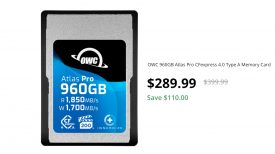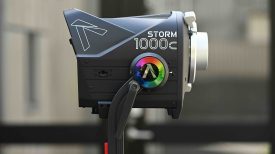
The Mavic 3 is an exciting drone from DJI. The new Hasselblad camera is one feature that stands out as it has a Micro Four Thirds sensor that will help with lowlight performance and overall image quality. DJI sent me the Mavic 3, not the Cine version, for review. For the most part, they are very similar, but the Cine model has more internal storage and records ProRes HQ. Why no other ProRes options? Good question. I think for most users, the Mavic 3, not “cine,” will be a better option as H.265 is pretty darn good.
Firmware Updates
Mavic 3 was released in early November, and a lot of early adopters were disappointed with the bugs that the aircraft had and many missing features. The most current firmware version is 01.00.0500, and to date, it has opened up the features people were waiting for. I think it would have been a good idea to wait before releasing a drone that needs a lot of updates to be fully functional. I believe DJI wanted to hit the market for the holiday shopping season and decided to go for it and fix it in post. LOL.
Below are the updates that have been released since the introduction of the Mavic 3.
Firmware Version 01.00.0400 (Dec 2021)
- Added FocusTrack, MasterShots, and Timelapse.
- Added RAW Only photo format.
- Reduced video recording noise for ProRes of Mavic 3 Cine.
- Reduced occasional vibration of aircraft arms in some scenarios.
- Improved RTH performance.
- Improved obstacle avoidance performance.
- Improved hover stability.
- Fixed issue: some computers could not connect to aircraft via USB.
- Fixed issue: abnormal color appeared in some scenarios.
- Fixed some bugs for the remote controller.
Firmware Version 01.00.0500 (Jan 2022)
- Added QuickShots, including Dronie, Rocket, Circle, Helix, Boomerang, and Asteroid.
- Added Panorama mode, capable of capturing in high resolution.
- Added burst shooting.
- Added digital zoom for normal video mode.
- Added Color Display Assist for D-Log.
- Added 4K/60fps and manual EI adjustment for MasterShots.
- Added QuickTransfer.
- Added zoom and D-Log for FocusTrack when recording video.
- Added support to set RTH altitude for Advanced RTH.
- Added USB mode for Mavic 3 Cine for copying data.
- Optimized accuracy of color correction.
- Increased image sharpness of Tele camera when shooting at high magnification.
- Optimized image area for Timelapse photos.
- Added support to DJI RC Pro to output clean HDMI footage.
- Added support for DJI RC Pro to cache video and download original video to an external SD card.
- Added support to use DJI RC Pro with DJI Air 2S.
- Fixed some minor bugs.
DJI has released firmware update v01.00.0600 last week with the following fixes:
- Increased the speed of searching GNSS.
- Fixed issue: Quick Transfer was not available for some scenarios in certain regions.
- Fixed some minor bugs.
Advantages of the Mavic 3 Cine
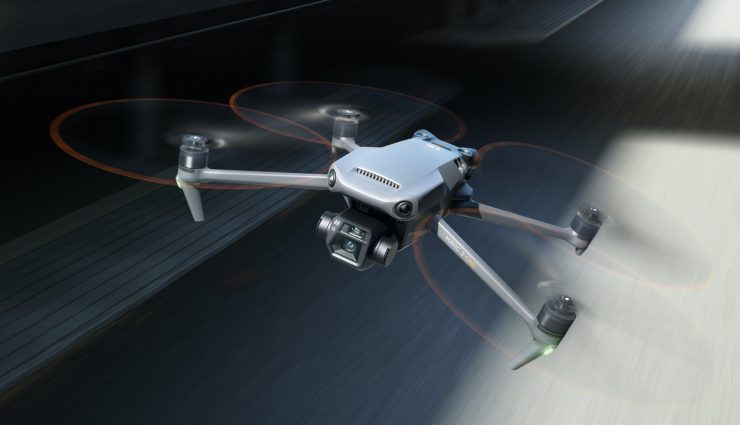
Yes, the Mavic 3 Cine has more recording options, but it also has the DJI RC Pro controller, and after flying a few times, I realized that I would like the DJI RC Pro controller with the non-Cine model.
I use an iPhone XR and an iPad Mini. I like the iPad Mini is larger and looks good, and it’s not that heavy. It can suffer a little in the sun and be harder to see than the iPhone but shading it with my head, and the sun direction works well, especially in the winter as the sun isn’t directly overhead.
Internal Memory
The Cine model has 1TB of internal memory, and I don’t see this as a big plus as you have to use the internal memory if you want to record ProRes HQ. The MicroSD option isn’t fast enough.
I like the idea of using cards with the same capacity as one battery flight time. Bring the drone back and change the memory card and battery. Having all the recordings internally is scary since you never know if something will go wrong. Maybe you crash and lose the drone along with all the recordings shot earlier. For professional use, it just isn’t a smart choice. Also, offloading from the drone will take some time to do especially with ProRes HQ files, and you have to use up battery time, and the drone can’t fly. With the Cine model, the last update added a USB mode for copying data.
It can come in handy in a pinch if you run out of cards, but I don’t see it as a viable option from using Micro SD Cards.
Kit Options Compared
| MAVIC 3 | MAVIC 3 CINE | |
| Video Formats | MP4/MOV MPEG-4 AVC H.264 HEVC H.265 H.264/H.265 Bitrate: 200 Mbps H.264/H.265 5.1K: 5120×2700 24/25/30/48/50fps DCI 4K: 4096×2160 24/25/30/48/50/60/120 4K: 3840×2160 24/25/30/48/50/60/120 FHD: 1920×1080p 24/25/30/48/50/60/ 120/200 * Framerates above are recording framerates. Videos will be played as slow-motion videos. | MP4/MOV MPEG-4 AVC H.264 HEVC H.265 H.264/H.265 Bitrate: 200 Mbps Apple ProRes 422 HQ 5.1K: 5120×2700 24/25/30/48/50 DCI 4K: 4096×2160 24/25/30/48/50/60/120 4K: 3840×2160 24/25/30/48/50/60/120 H.264/H.265 5.1K: 5120×2700 24/25/30/48/50 DCI 4K: 4096×2160 24/25/30/48/50/60/120*fps 4K: 3840×2160 24/25/30/48/50/60/120*fps FHD: 1920×1080p 24/25/30/48/50/60/ 120*/200*fps * Framerates above are recording framerates. Videos will be played as slow-motion videos. |
| Internal Storage | 8GB | 1TB |
| Weight | 895g | 899g |
| Price | Mavic 3: $2,199 Fly More Combo: $2,999 | Mavic 3 Cine Premium Combo: $4,999 |
| Included Items | Mavic 3 Basic Kit *RC-N1 Remote Controller *1 Intelligent Flight Battery *3 x Pair of Low-Noise Propellers *65W Portable Charger *Storage Cover *RC-N1 Remote Controller Sticks *RC-N1 Remote Controller *USB Type-C Cable *RC-N1 Remote Controller *Micro-USB Cable *RC-N1 Remote Controller *Lightning Cable *USB Type-C Cable Fly More Combo: *RC-N1 Remote Controller *3 x Intelligent Flight Battery *ND Filter Set (ND4, ND8, ND16 & ND32) *6 x Pair of Low-Noise Propellers *65W Portable Charger Battery Charging Hub *Storage Cover *RC-N1 Remote Controller Sticks *RC-N1 Remote Controller *USB Type-C Cable *RC-N1 Remote Controller *Micro-USB Cable *RC-N1 Remote Controller *Lightning Cable *USB Type-C Cable *Convertible Carrying Bag | Mavic 3 Cine Premium Combo: *DJI RC Pro Remote Controller *3 x Intelligent Flight Battery *ND Filter Set #1 (ND4, ND8, ND16 & ND32) *ND Filter Set #2 (ND64, ND128, ND256 & ND512) *6 x Pair of Low-Noise Propellers *65W Portable Charger *Battery Charging Hub *Storage Cover *DJI Control Sticks for RC Pro Remote Controller *Lightspeed Data Cable (10 Gb/s) *USB Type-C Cable *Convertible Carrying Bag |
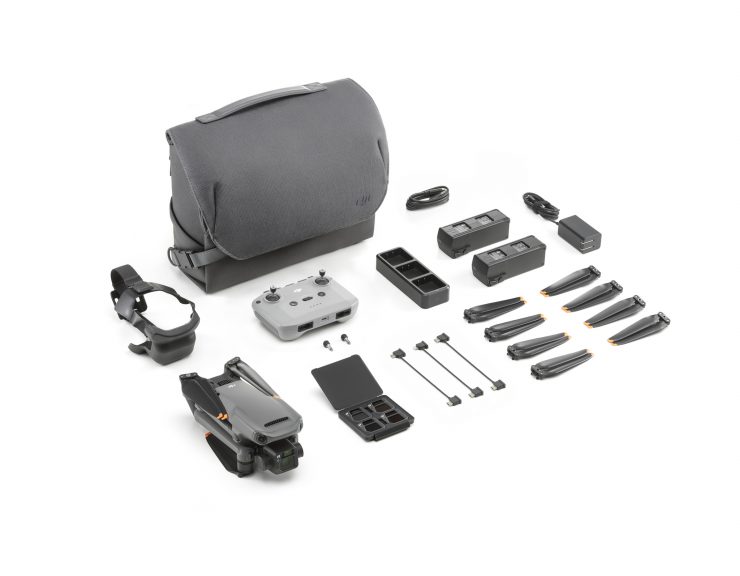
The Fly More Combo is worth it as you get useful accessories like three batteries, the 3-slot Battery Charging Hub, and a portable charger. You stick three batteries in, and it charges the battery with the least amount of depletion and moves to the next. Great feature if you want to get back in the air as quickly as possible. Three batteries will give you roughly 1.5 hours of flight time. For me, this is plenty for a day of flying.
DJI RC Pro Controller
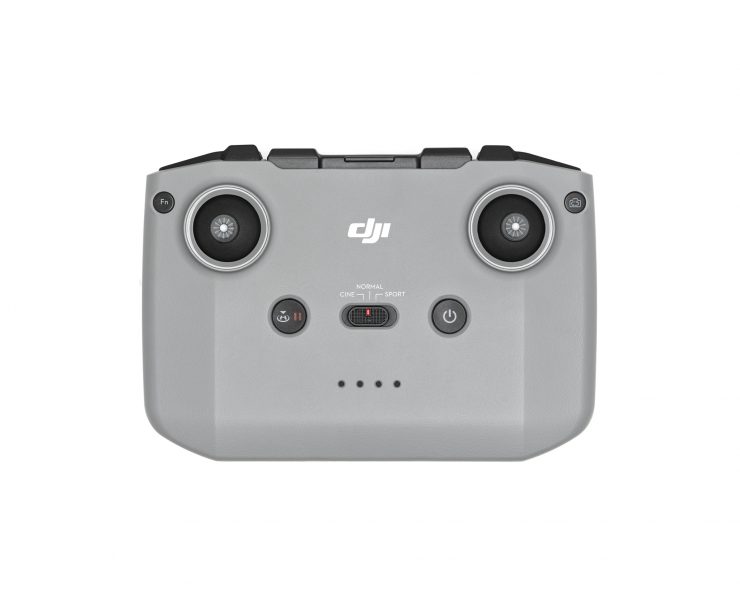
The DJI RC Pro retails for $1,199. That is expensive, and it is not supported with all DJI drones other than the Mavic 3 and Air 2s. I don’t know why this is as the former Smart Controller did work with several models. Usually, backward compatibility is implemented, but maybe the hardware and software weren’t able to make it a reliable working controller for the other models that use O3+ video transmission technology. Going forward, I feel we will see the controller be compatible with new releases.
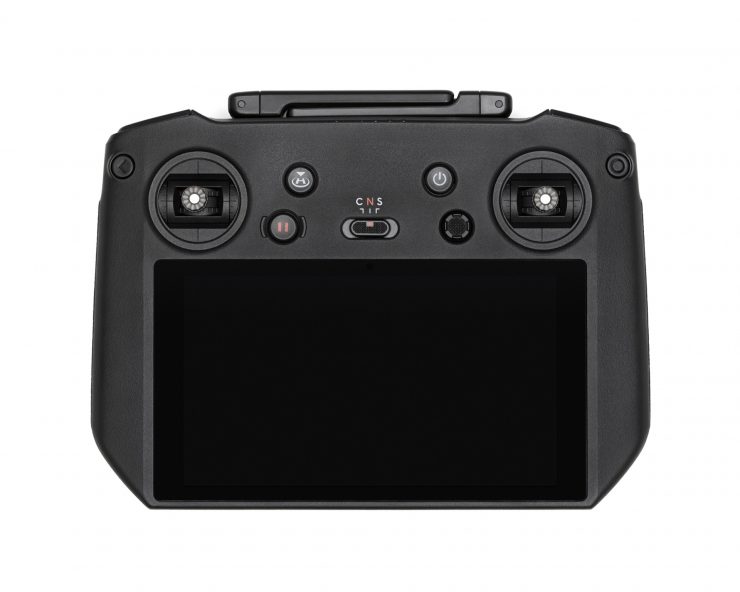
If you don’t care about ProRes HQ recording, you can save $800 and buy the DJI RC Pro for $1,199. That isn’t a bad option, but I wished DJI would make this an “option” to swap them out when purchasing and save a few bucks, but I get that it’s special to the Cine model and separates the products more. The included RC-N1 Remote Controller retails for approximately $160, so this gives you an idea of its value to the kit.
The latest firmware update added the Air 2s compatibility to the RC Pro Controller. As they are released, I feel DJI will add more drones to the list. I like the idea of a dedicated controller that doesn’t require an iPad or iPhone. I have a DJI RC Pro Controller on the way to try out. The screen being 1000 nits is helpful but not as bright as I think it should be. It does have a setting to boost the brightness for full sun use. This feature will drain the battery faster. DJI states the RC Pro Controller gets 3 hours of runtime with normal use.
Is ProRes worth the extra cost?
This is the question we have to ask ourselves because ProRes HQ is a premium feature with the Mavic 3 Cine. For professional use, I can see it as a no-brainer since you want to get the best possible image and be able to grade it to make it pop for the client. However, the H.265 looks very good for the casual user, and it grades well. Yes, you might need to use proxies or transcode the footage if you don’t have a modern computer, but the sacrifice isn’t a big one, and going to the Mavic 3 will save you $2000. I would get the Mavic 3 and add the DJI RC Pro if I were buying. I don’t use drones professionally, and if I need shots, I hire a guy (or gal).
ProRes has its advantages with less compressed 10-bit recordings, but the H.265 is very good. Hopefully, DJI will also improve the other codec options as well in the future.
Fly
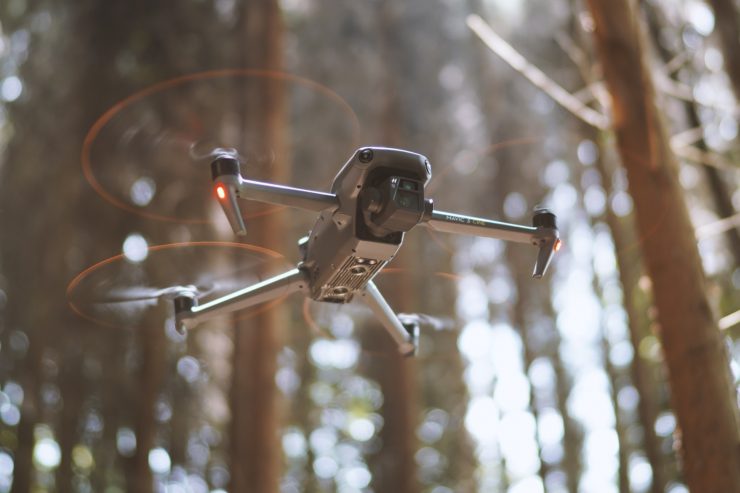
I have to state I’m not an experienced drone pilot, so please understand that these are my thoughts on flying the drone from a somewhat novice voice. This is a good thing in some ways, as it will show how simple or difficult it can be for the less experienced pilot.
In San Diego, flying drones is harder as we have several small airports and military bases around the county and city. This makes flying tough and time-consuming as I have to go to specific locations for test flights.
The Mavic 3 has an operating distance of 9.3 Miles / 15 km. That is far away, and obviously, you shouldn’t go that far out, but knowing it can is impressive, and I won’t be trying to see if it will hit that mark. To be honest. Flying drones have always made me nervous, so I don’t like pushing them.
I did have an opportunity to use the Mavic 3 for a promo shoot with a licensed pilot. It was a lot of fun, and we got some nice shots that really added to the project. I think drone footage adds so much production value. You don’t need a lot to have a big impact.
One thing about the Mavic line is the drones are agile and responsive compared to the Phantom. I took the Mavic 3 out for some shots we needed for a new promo, and the pilot that normally uses a Phantom 3 was impressed with the Mavic 3. I also noticed how quiet it is as well. That is a big deal as drones tend to annoy people, especially in scenic locations where people are enjoying nature. Also worth noting is the 2x shot at the skateboard park is pretty darn good. It’s very usable, but I wouldn’t go any farther as it gets mushy.
I found flying the Mavic 3 to be very easy. With the new features like Spotlight and Master Shots, you don’t have to worry about keeping the subject framed correctly, just how you want to fly around it. For inexperienced pilots such as myself, I appreciate the simplicity, and the results look professional.
I have read that some people have experienced flyaways or the Mavic 3 just stops communicating with the remote. I personally haven’t experienced this, but it is well documented. Hopefully, DJI will continue to improve by fixing these bugs with future firmware updates.
Sensing
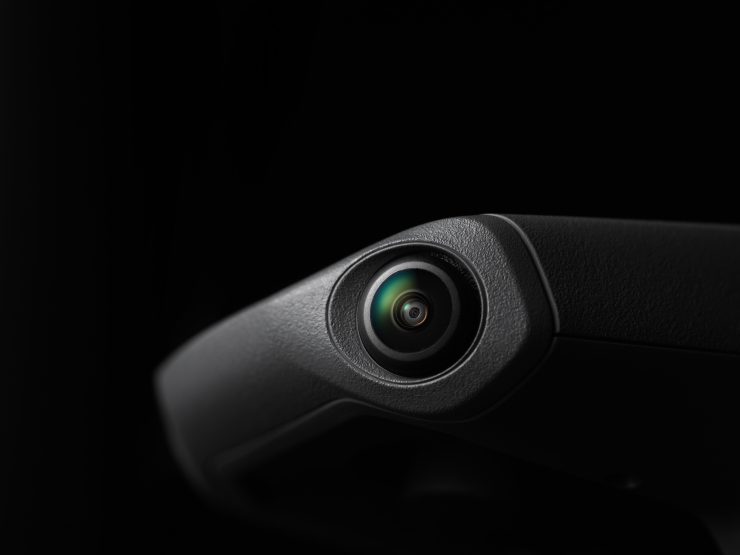
It goes without question that safety is very important when flying a drone. Especially for the less experienced pilots having built-in features that will assist in collisions is a good thing. The Mavic 3 has five sensors that help the pilot avoid hitting trees and other obstacles in its path.
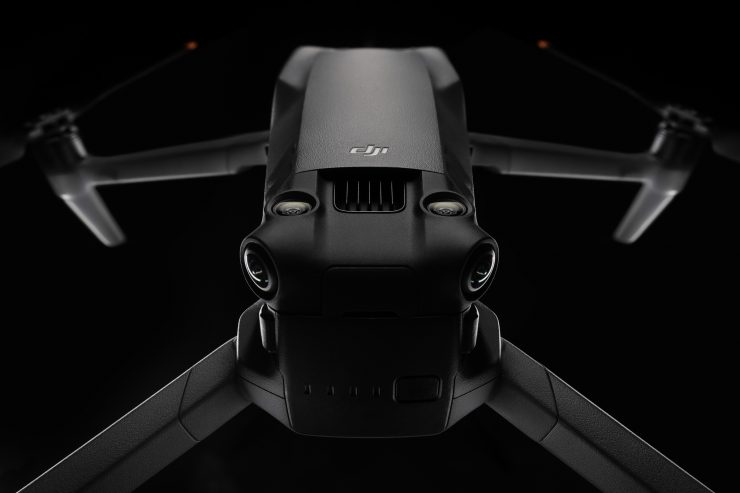
You can adjust and turn them off if you know what you are doing and the sensors are inhibiting your shot. The Mavic 3 will constantly give audible warnings when something is getting close to it.
| Sensing System | Omnidirectional binocular vision system, supplemented with an infrared sensor at the bottom of the aircraft |
| Forward | Measurement Range: 0.5-20 m Detection Range: 0.5-200 m Effective Sensing Speed: Flight Speed ≤ 15m/s FOV: Horizontal 90°, Vertical 103° |
| Backward | Measurement Range: 0.5-16 m Effective Sensing Speed: Flight Speed ≤ 12m/s FOV: Horizontal 90°, Vertical 103° |
| Lateral | Measurement Range: 0.5-25 m Effective Sensing Speed: Flight Speed ≤ 15m/s FOV: Horizontal 90°, Vertical 85° |
| Upward | Measurement Range: 0.2-10 m Effective Sensing Speed: Flight Speed ≤ 6m/s FOV: Front and Back 100°, Left and Right 90° |
| Downward | Measurement Range: 0.3-18 m Effective Sensing Speed: Flight Speed ≤ 6m/s FOV: Front and Back 130°, Left and Right 160° |
| Operating Environmen | Forward, Backward, Left, Right, and Upward: Surface with a clear pattern and adequate lighting (lux>15) Downward: Surface with a clear pattern and adequate lighting (lux >15). Diffuse reflective surface with diffuse reflectivity>20% (e.g. wall, tree, person) |
Hasselblad Camera
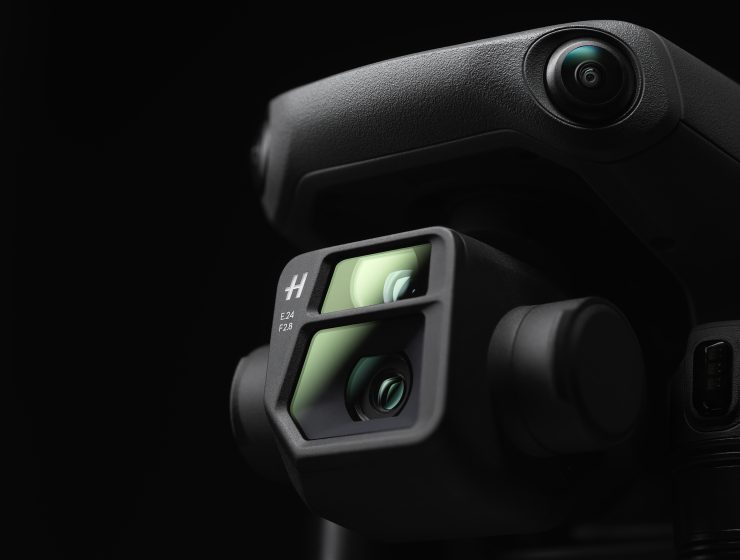
The image quality is very good with the new micro four-thirds Hasselblad camera. No more mushy grass and leaves on treetops. This is a big update.
It also has a second camera with up to 4X that looks pretty good at 2X. I wouldn’t use it a lot as it’s digital, and you lose IQ, but it sure can come in handy if you need a tighter shot.
The second camera has a 1/2″ CMOS sensor and is called an Explore camera. This is because the IQ isn’t very good at 4X and is designed to get a visual on potential sites to fly to. I like the idea, and it can be helpful; however, you know people are going to want to use it, and the results are not professional, so I would think of it as an interesting feature but don’t depend on it. 2X is about as much zoom as I would use.
The color looks very pleasing and natural. This is huge as I feel I can shoot with it and possibly not go to D-Log for post. If you need to see into the shadows more, then yes, D-Log will be an excellent option, but the casual pilot is going to enjoy the image quality and color straight from the Mavic 3.
Mavic 3 Hasselblad Camera Specifications
| Sensor | 4/3″-Type CMOS Sensor |
| Sensor Resolution | Effective: 20 Megapixel (5280 x 3956) |
| Focal Length | 24mm (35mm Equivalent) |
| Field of View | 84° |
| Maximum Aperture | f/2.8 |
| Minimum Aperture | f/11 |
| Minimum Focus Distance | 3.3′ / 1 m |
| ISO Sensitivity | Photo/Video 100 to 6400 |
| Shutter Speed | Electronic Shutter 8 to 1/8000 Second |
| Video Format | 5120 x 2700p at 24/25/30/48/50 fps (200 Mb/s MOV/MP4 via H.264/AVC, H.265/HEVC) 4096 x 2160p at 24/25/30/48/50/60/120 fps (200 Mb/s MOV/MP4 via H.264/AVC, H.265/HEVC) |
| Still Image Support | DNG / JPEG / Raw 20 MP (5280 x 3956) |
| Media/Memory Card Slot | Single Slot: SD/SDHC/SDXC [2 TB Maximum] |
| Photo Modes | Auto-Exposure Bracketing (AEB), Single Shot |
Second Camera Specifications
| Video Resolution | 4K: 3840 x 2160 @ 30 FPS, h.264/h.265 FHD: 1920 x 1080 @ 30 FPS, h.264/h.265 |
| Digital Zoom | 4x |
| Sensor | 1/2″ CMOS |
| FOV | 15° |
| Equivalent 35mm Focal Length | 162 mm |
| Aperture | f/4.4 |
| Focus | 3 m to Infinity |
| ISO | Video: 100 to 6400 Still Image: 100 to 6400 |
| Shutter Speed | 2 to 1/8000 per Second |
| Maximum Image Size | 4000 x 3000 |
| Photo Format | JPEG |
| Video Formats | MP4/MOV (MPEG-4 AVC/H.264, HEVC/H.265) |
| Photography Modes | Still Shot: 12 MP |
As you can see, the specs are very different for the second camera. It’s cool to have options, and DJI did make some IQ improvements to the camera with the latest firmware, so there could be more room for improvement. For now, stick to 2X as it is usable.
Updated Camera Protective Cover
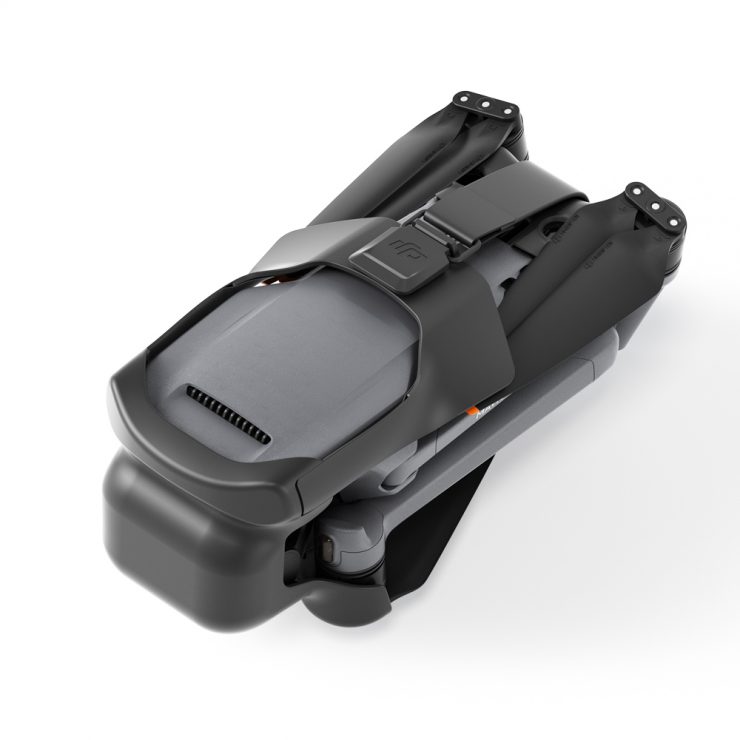
The new storage cover is a big upgrade. DJI clearly spent some time designing it and making it easy to take on and off while doing what it’s supposed to do. Protect the camera and gimbal. Nice work!
Final Thoughts
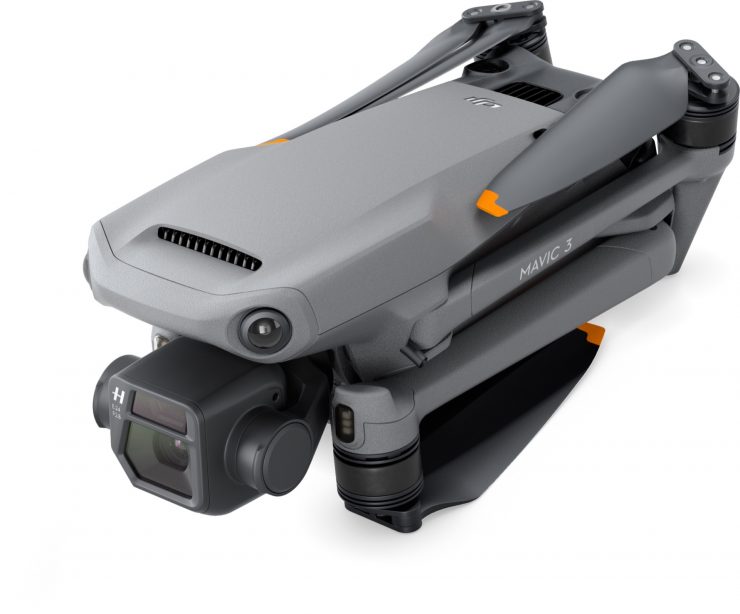
While the release could have been better with more features working, the Mavic 3 has come a long way since November 2021. The image is really good, and the H.265 codec gives you a solid recording. Yes, it’s computer-intensive to work with, but with a newer computer system such as the M1 Macs, it’s not bad at all. Transcoding is always an option or proxy workflows.
While the Cine model offers ProRes HQ and more internal storage, I’m not sure it’s worth the extra cost for many users. I haven’t shot the Cine version, so it’s hard to have a solid opinion if the ProRes HQ is far superior to the H.265 option of the Mavic 3. If you are a professional, then I can totally understand getting the version with the most features.
For serious enthusiasts, the base model really delivers. In the end, the image quality is what it’s all about, and the base model delivers with the same MFT Hasselblad camera. Maybe a ProRes 422 option for the Mavic 3?
I would pick up a DJI RC Pro Controller with the Fly More kit. This way, you will be ready for what is next as I mentioned, I think we will see other drones that will be compatible in the future. It makes a lot of sense to have a dedicated controller with a bright screen and the Fly app installed instead of a mobile phone or tablet. It also has an HDMI out so you can share the image coming from the drone. That is pretty cool.




